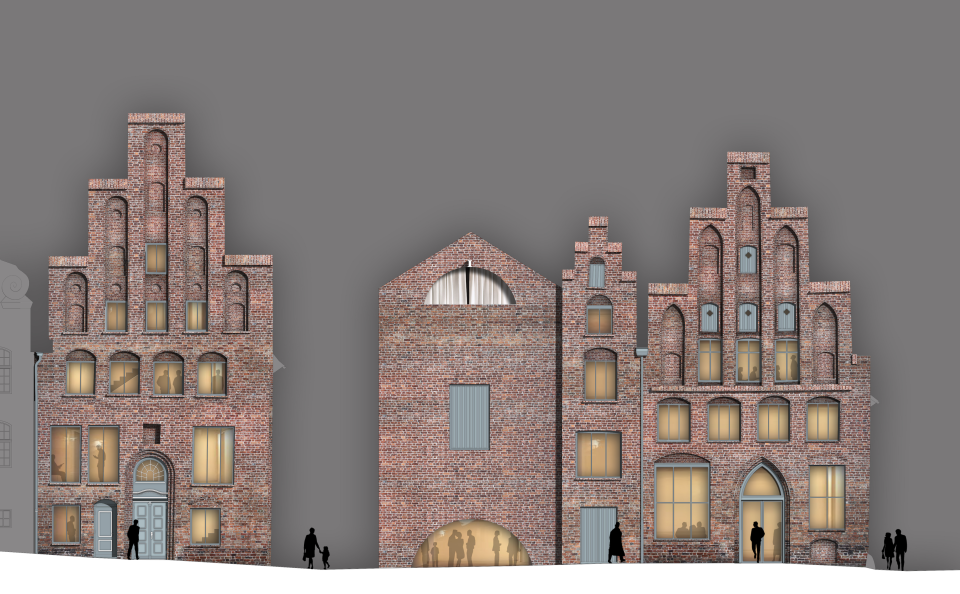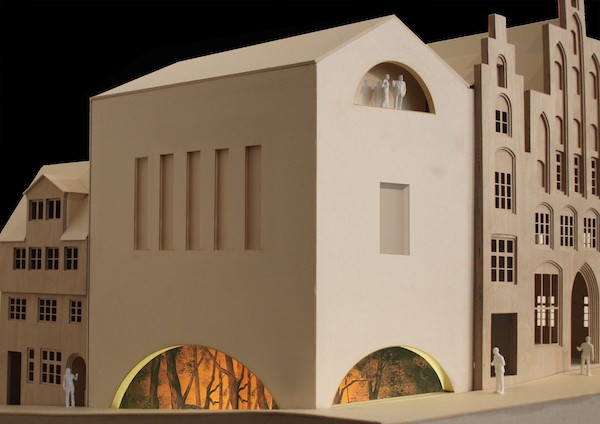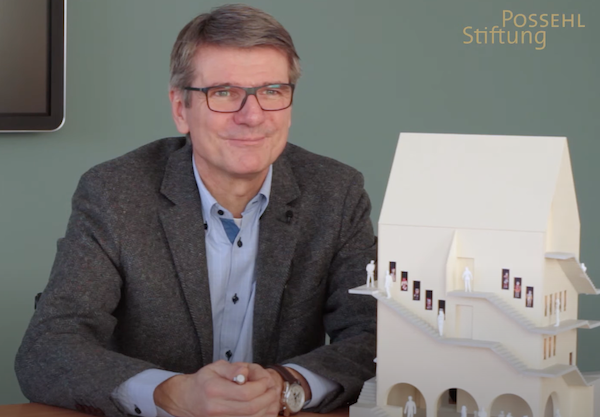The Architecture of the building A new cultural institution for puppet theatre is born
New spaces for puppet theatre are being created – this is the largest, most challenging new puppet theatre building constructed in Germany in recent history. KOLK 17 Figurentheater & Museum will remain an important guest theatre complete with a new theatre hall.
Spaces for theater figures in the Kolk
The renovation of the historic buildings in Kolk is essential. Once construction began and the historic walls were uncovered, it became clear that the condition of the buildings was far worse than anticipated, even posing risks to structural stability in some areas. Examples include loose bricks and unbonded walls. Additionally, the 1970s renovation no longer meets current standards for a museum or theater building.
To address these issues, the POSSEHL Foundation is utilizing historic materials and techniques, working closely with Lübeck’s monument preservation authorities. For instance, loose and damaged bricks have been replaced with new monastery-sized bricks, and the facades are being adjusted in detail to bring them closer to their historical originals. Additional piles are being installed to prevent the Kolk from sinking, and new wall bonding is ensuring stability to eliminate any risk of collapse.
Revised design
The design envisages a completely new layout and use of the houses in the Kolk: The museum and the puppet theatre will swap places. The building complex Kolk 20-22 will house the exhibition rooms while the corner building Kolk 18 will contain the new theatre hall and a forum. The corner building Kolk 14 will become the new main entrance.
This is how the design was adapted to the conditions in the Kolk: A tunnel connection between the theater and museum is no longer planned due to soil conditions, and the buildings will not be constructed any deeper than their current depth. The two new buildings incorporate the motif of red brick, which, along with the tall St. Peter’s Church wall, characterizes the Kolk's streetscape.

Construction site - Demolition by hand
A house from the 1930s was demolished to make way for the new theatre building. However it was located between two historically listed buildings. Therefore the demolition had to be carried out carefully so as not to disturb the historically significant neighbouring buildings containing ancient murals or those which are inhabited. So as to avoid damage to the neighbouring properties, historic buildings and wall paintings, vibration measuring devices were installed in the neighbouring buildings. In this fashion, it was possible to react immediately in the case of possible stronger vibrations.
The condition of the building materials were in such poor condition that renovation and upgrade to today’s standards was not feasible.
Bauen im Bestand
"Six listed buildings to be renovated and converted. Of one, only the shell will remain standing and into this a new, modern building will be inserted, plus two new buildings on historic land, intricately interwoven. Highly demanding future uses are to be accommodated within an inflexible structural corset. A building site in which every shovelful of earth tells a story, but in which every stone threatens to sink, an environment as narrow and exciting as no other in the middle of a World Heritage Site, and the chance to transform this piece of the Middle Ages into a structure of the modern age! No small feat for us architects!"
Georg Konermann & Ingo Siegmund

Das Haus im Haus
“The design by Konermann Siegmund has two major, beneficial features. Firstly, a completely new theatre is being created in Lübeck – a theatre for puppets. Secondly, the museum will be housed in a building with a listed façade on the outside, but in which a new house – within a house will be built behind this façade.”
Max Schön, Chairmen of the board of the POSSEHL-Fundation
